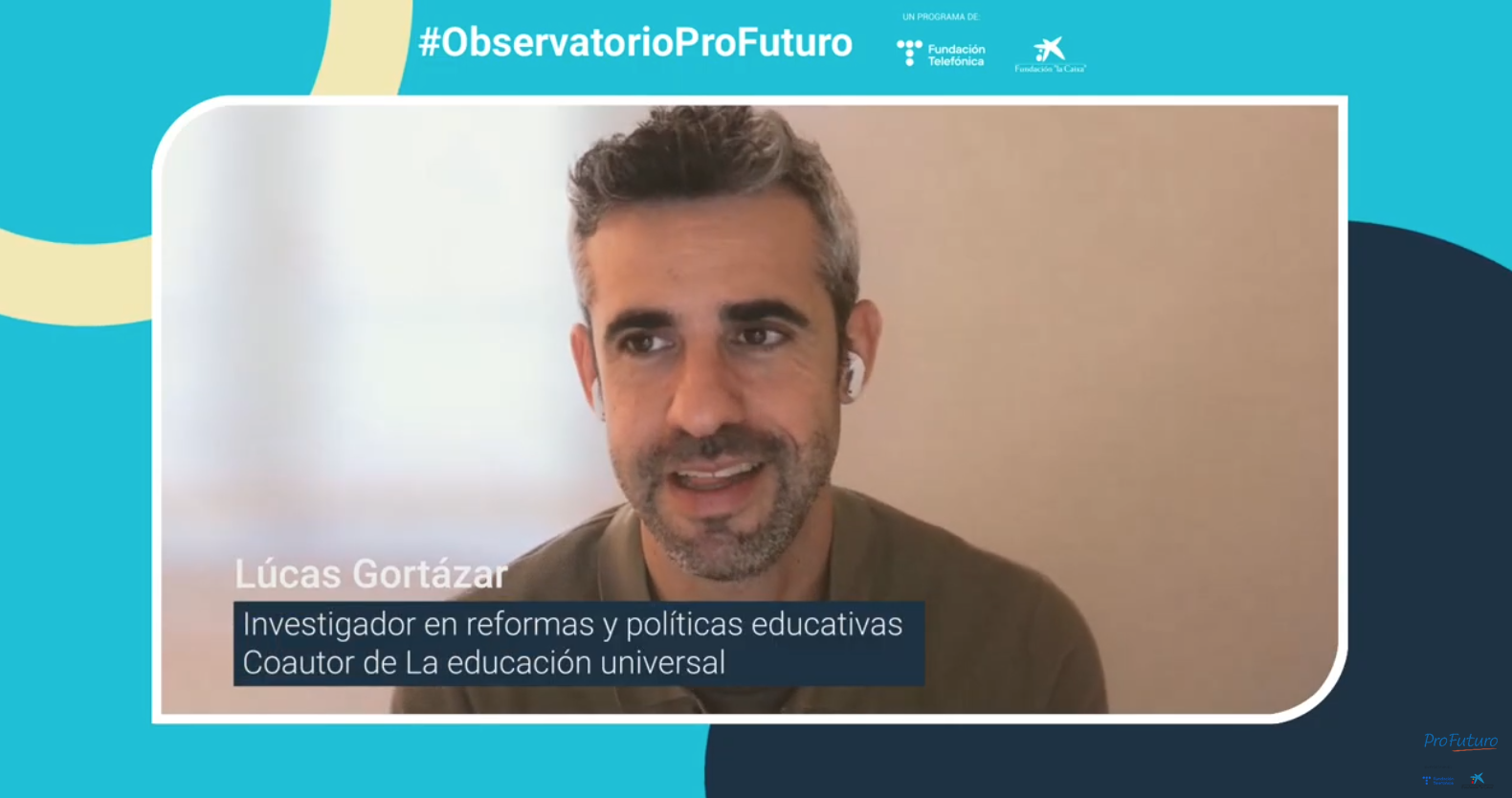Artificial Intelligence That Thinks in Africa

Korogocho (Nairobi, Kenya)
Artificial intelligence is reshaping many things, including education. But not in the same way everywhere. In Africa, the arrival of this technology raises a question that is rarely asked in other contexts: how to integrate it without depending, once again, on solutions designed on other continents?
In response to this question, answers have begun to emerge. Not big headlines, but strategies built step by step: own frameworks, local developments, initiatives that understand AI not as a miracle, but as a tool that can be useful if adapted to the terrain. With its rhythms, its languages, its priorities.
This article focuses on what is already happening: policies underway, platforms in use, concrete decisions that attempt to improve access and educational quality in various African countries. All this happens, in general, away from the usual spotlight.
May 25, Africa Day, offers a timely excuse to pay attention to these advances. It is not just a symbolic date, but an occasion to see how a technological autonomy is being pursued that does not necessarily involve importing models. The Continental Artificial Intelligence Strategy of the African Union, approved in 2023, is one of the most ambitious examples. In it, education appears as a priority area to develop ethical, useful, and, above all, pertinent AI.
And that relevance is being sought in actions as concrete as the creation of school materials in local languages, the design of inclusive tools for students with disabilities, or the digital training of teachers. It is not a revolution. But it is a real transformation, sustained and, in many cases, born from within.
Education as a Key Pillar in the Continental AI Strategy
In 2023, the African Union decided to take artificial intelligence seriously. It did so with an extensive document, at times technical and at times visionary, called the Continental AI Strategy. It is the first time the continent has endowed itself with a common roadmap to address a technology that, if one believes what international forums say, is going to change everything. Africa, with its rhythms and its own agenda, prefers to start with what is most urgent: education.
The commitment is significant. It is not simply about adding computers or applications in classrooms. The strategy starts from a diagnosis that is not new but still valid: there is a structural shortage of teachers, marked inequalities between urban and rural areas, scarcity of materials in local languages, and barriers that are not resolved with a couple of clicks. However, there is also an opportunity: if done well, AI could serve to expand access to education, improve its quality, and close, at least a little, some of the most persistent gaps.
The proposed vision is comprehensive. AI, it is said, should not be a decorative tool or a generic solution imposed from outside. It must adapt to the educational objectives of each country and make sense in its context. That implies using it to support teachers—not to replace them—, produce culturally relevant content, and design systems that work beyond capitals. It is not enough to automate processes; one must think about what is automated, for whom, and why.
The document insists on a principle that, read coldly, sounds elementary but is less common than it seems: AI must be inclusive. This means, among other things, ensuring that everyone—students, teachers, schools—has access to basic infrastructure. That algorithms do not replicate colonial prejudices or deepen inequalities. And that ethics is not a sympathetic annex at the end of projects, but part of the design from the beginning.
There is also a clear message about the need to build local capacities. If AI is a black box, only those who design it understand it. And if those who design it are thousands of kilometers away, the margin for maneuver is limited. Therefore, the training of teachers and students in digital skills, data science literacy, and critical thinking is proposed. Not to turn them into Google engineers, but so they can understand what is behind an automated decision and decide whether it makes sense or not.
The strategy also bets on regional cooperation. In a continent with more than fifty different educational systems, the exchange of experiences and shared tools can prevent each country from starting from scratch. Initiatives like the Knowledge and Innovation Exchange (KIX) Centers of the GPE are already testing how to translate that idea into seminars, publications, or joint learning platforms.
Another interesting—and unglamorous—point is the creation of national skills repositories. A kind of inventory, country by country, about what skills are necessary for students and teachers to interact with AI without fear or dependence. It is a practical way to avoid duplications, guide training, and adapt policies to what is really needed.
Overall, the Continental AI Strategy of the African Union does not promise miracles. But it proposes a concrete ambition: that artificial intelligence is not another factor of exclusion, but a tool to build a fairer, closer, and more own education. That, of course, will require investments, political will, and a critical look at technological promises. As often happens with these things, the difference is not in the algorithm, but in who writes it and for what purpose.
Echoes of the Strategy: Concrete Cases Underway
The Continental Artificial Intelligence Strategy of the African Union is, on paper, an ambitious promise. But there is already more than paper. Although designed as a long-term roadmap, its ideas are beginning to land in concrete initiatives, with visible results—sometimes modest but revealing—in the educational field. Projects driven not from Silicon Valley or Brussels, but from Bamako, Kisumu, or Porto-Novo.
A recent report from the KIX (Knowledge and Innovation Exchange) program of the GPE, prepared by the Africa 21 Center, collected several of these cases. They are not revolutions. They are tangible advances that show that artificial intelligence, well integrated, can be a useful tool in contexts where almost all others are scarce.
In Mali, for example, the non-profit organization RobotsMali has managed to produce more than 180 children’s books in Bambara, a local language with a strong oral presence but few written resources. They did it by combining generative AI models like ChatGPT, machine translation systems, and human editorial review. Result: adapted, accessible, and culturally relevant content, produced at a fraction of the usual cost. It is a small victory for literacy, but also for linguistic sovereignty.
Further east, in Kenya, Maseno University has developed a translation tool between English and Kenyan Sign Language. Here, AI does not appear as a technological trick, but as a concrete solution to the problem of inclusion of deaf students. The project was designed in collaboration with the deaf communities themselves, which allowed refining not only the language but also the pedagogical approach. It is an example of how technology can adapt to the user, and not the other way around.
In Benin, Cameroon, and the Democratic Republic of the Congo, the STEPS project—focused on science, technology, engineering, and mathematics in primary education—has used AI tools to develop contextualized textbooks. With the help of GPE-KIX, local teams combined open educational resources and algorithms that facilitated the initial drafting of content, suggested nearby examples, and helped in translations into national languages. The result: more relevant, more understandable, and therefore more effective materials.
Teacher training is another expanding line. In October 2024, GPE-KIX Africa 21 and UNESCO brought together representatives from 25 Francophone and Lusophone African countries in Dakar to discuss digital skills and artificial intelligence in teaching. More than a congress of good intentions, it was an attempt to land ideas: how to design realistic national strategies, how to train those who train. Professor Mamadou Kaba Traoré, from the University of Bordeaux, summarized it clearly: skills repositories are needed. Not so much to measure what is missing, but to build on what already exists.
These experiences, documented by GPE-KIX, are still occasional. In many cases, they depend on external support, international collaborations, or limited funding. But they also show something else: local capacity, institutional will, and a certain audacity to experiment with new tools without losing sight of the context. It is not about replicating foreign models or seeking miraculous solutions. It is, rather, about adapting, testing, correcting, and moving forward.
In that sense, what the Continental AI Strategy proposes is beginning to take shape. Like a quiet but steady movement. With its limitations, but also with clear signs: in Africa, artificial intelligence is no longer a distant promise. It is, little by little, becoming a tool that is beginning to speak the languages of the continent.
In Africa, artificial intelligence is no longer a distant promise. It is, little by little, becoming a tool that is beginning to speak the languages of the continent.
The Hard Part Isn’t Starting, But Scaling
Pilot projects, by definition, are miniature promises. And in Africa, AI-based educational promises are not in short supply. What is lacking, as almost always, is what comes next: the ability for these experiences to move from initial enthusiasm to real educational systems—with their bureaucracies, shrinking budgets, and urgent needs.
The African Union’s Continental Artificial Intelligence Strategy does not ignore this difficulty. On the contrary, it focuses precisely there: it is not just about innovating, but about building structures capable of sustaining that innovation without collapsing at the first obstacle. That includes digital infrastructure, yes, but also teacher training, curriculum redesign, regulatory frameworks, and something much harder to achieve: sensible governance of data.
One of the tools several countries are beginning to explore more seriously is the creation of national repositories of AI-related competencies. The idea is simple in theory: map out which skills students and teachers need to navigate the digital path. But in practice, these repositories also work as compasses: they help detect gaps, guide training policies, and, above all, avoid the application of generic solutions where targeted responses are needed.
At the regional seminar held in Dakar in 2024, organised by GPE-KIX and UNESCO, this issue was discussed in depth. Professor Mamadou Kaba Traoré framed the issue directly: without an inventory, there’s no strategy. And without a strategy, AI in education risks being just another short-lived experiment that changes nothing.
Beyond the technical, the political dimension also matters. Regional collaboration, still in its early stages, appears as one of the keys to not repeating mistakes in isolation. Sharing competency frameworks, exchanging good practices, coordinating efforts—this may sound idealistic, but it is probably more realistic than expecting each country to build its own model from scratch.
In short, one thing seems clear: the integration of artificial intelligence into African education won’t be played out solely in laboratories or conferences. It will be played out in classrooms, in ministries, in teacher training centres. And it will demand more than just technological enthusiasm: it will require time, consistency, and a healthy dose of constructive scepticism. Because with AI, as with almost everything, the challenge isn’t having a good idea. The challenge is making it work for everyone.
An AI with Its Own Accent
The initiatives already underway point to a reality often overlooked from the outside: Africa is not merely importing technology. It is beginning to shape it. In the educational field, that means trying out an artificial intelligence that is not only efficient, but also meaningful. That not only works, but makes sense. And that sense is being defined by local actors, with their own criteria: inclusion, equity, cultural relevance.
The African Union’s Continental Artificial Intelligence Strategy acts here as a sort of compass. It does not prescribe magical solutions, but offers a direction: link technology to the educational objectives of the continent. This implies, among other things, accepting that AI is not neutral, nor universal, nor necessarily good. It can reinforce inequalities or reduce them. It can homogenise or diversify. Everything depends on who designs it, how it is applied, and for what purpose.
In this case, the purpose is clear: to build stronger, more open, more locally-rooted educational systems. But good intentions or successful pilot projects are not enough. The challenge is more complex: to transform specific experiences into public policies, to integrate AI into teacher training, to coordinate efforts across countries—all without losing sight of the essential question: what is this for, here?
Artificial intelligence, when rightly considered, is not an end. It is a tool. And like any powerful tool, it requires judgement to use it. In Africa, that judgement is beginning to be expressed more clearly: it is not about adapting schools to software, but adapting software to schools. Not about copying foreign models, but imagining new ones. And above all, ensuring that the right to learn does not depend on where you are born or what language you think in.
That is no small feat. And although the path will be long—as it always is in education—the important thing is that it has already begun. And this time, with an African accent.






